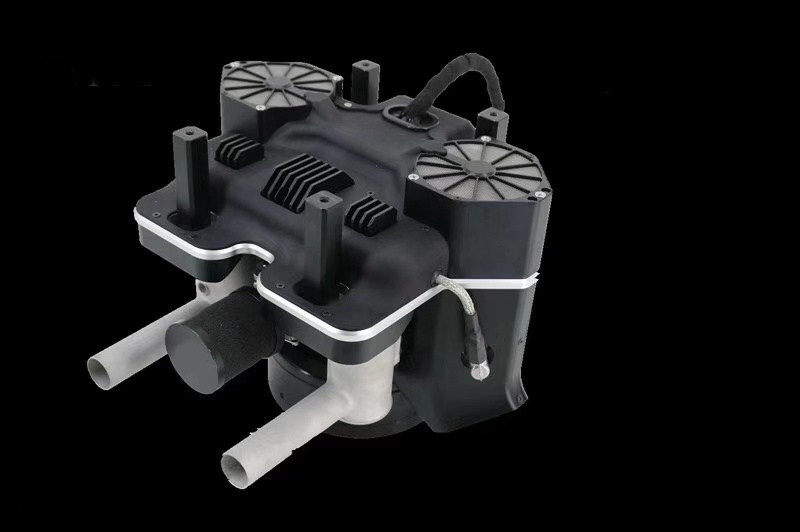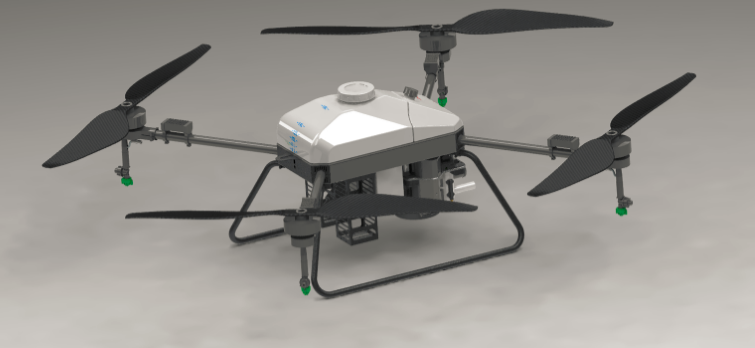Russian Army Forms Anti-UAV Radar Unit
Russia’s “News” website published on February 21 Alexey Ram and Bogdan Stepovoi’s “Gang of the Beast Hunter: Army: Army There will be reports of anti lidar drone forces, the Russian media called it against enemy cruise missiles and drones, and the Russian radar corps has newly formed a unit equipped with a "gang 2-2" low-altitude radar and automatic control system for air defense weapons.
It was learned from the Russian Ministry of Defense that the Red Flag 4th Air Defense Group Army formed the first batch of mobile units, and managed aviation and air defense deployed in the Southern Federal District, Northern Caucasus Federal District, Crimea Federal District and Sevastopol Federal City Missile and radar forces.
New tactics against low-altitude flying targets were developed in Syria. It was there that the Russian army discovered that unmanned aerial vehicles and cruise missiles concealed in pleated terrain could avoid fixed or low-mobility radars. Now, the newly built special forces will move towards the source of danger to ensure the timely detection of hidden air targets. High-mobility radar and automatic control systems for air defense weapons can take necessary measures to repel cruise missiles and unmanned aerial vehicles in a timely manner.
According to reports, the "Gang 2-2" low-altitude radar is used to monitor the airspace and determine the distance, ladder, altitude and route of the air target. It is specially designed to search for low-altitude and ultra-low-altitude flying fighters, helicopters, drones and cruise missiles, and can find targets in dense reflection environments with dense buildings, folds of terrain and hydrometeorological formations. At the same time, "Gang 2-2" can also work reliably under enemy electronic interference.

Russian military "Gang 2-2" mobile low-altitude radar system.

"Gang 2-2" mobile low-altitude radar vehicle close-up.
For reasons of economy and technical simplicity, the radar is installed on three off-road vehicles. The first is an instrumentation vehicle, the second is a radar antenna vehicle, and the third is a diesel generator vehicle, and the cable is placed on the trailer. This simple layout allows the radar station to be deployed within 20 minutes.
Reported that the equipment can carry out omnidirectional surveillance within 150 kilometers. When the radar antenna is raised to 14 meters, it can detect hidden targets within a range of 41 kilometers and a height of about 100 meters. If it rises to 52 meters, the detection radius will be extended to 55 kilometers. The radar can operate at temperatures from minus 50 degrees Celsius to minus 50 degrees Celsius.
If necessary, the Russian military radar can also cooperate with air defense missile forces, aviation forces, border defense and coastal defense forces, and the Air Traffic Management Bureau.
The former deputy commander-in-chief of the Russian Air Force, which is responsible for the joint air defense system of the CIS countries, Ejeki Biezhev, believes that the experience of recent decades shows that the efficiency of air defense forces depends on the mobility of radar and air defense missile systems.

Russian army mob-M class light protection launches "caliber" cruise missiles.
He told the "News": "The fixed air defense system can resist the enemy's initial attack, but it will inevitably be destroyed in the next attack. And the "gang" radar can be transferred in a few minutes to enhance the survival ability of the air defense system. It is good at Dealing with cruise missiles and drones can also prevent the loss of some surveillance holes caused by radar. At the same time, the'gang' is also easy to disguise."
The report believes that the Russian army is actively strengthening the air defense system. For example, the Thug-class small missile ships (carrying "caliber" cruise missiles) that carry out strategic missions in the Caspian Division Fleet do just that. Radar companies equipped with P-18RT radars are also camped in the Caspian Sea area. Meters of various air targets.
6000W Hybrid generator Power System for Lidar drone

Drone hybrid generator FL6000 is a high efficiency generator designed for multicopters. FL6000 generator is only 7.2kg , which is much lighter than any other generators that produce 600w output power, so FL6000 generator is five times the efficiency of other generators. The continuous power output of generator is 5000w. and the max flight time is about 2 hours.
specification
Size: 270*310*252mm (LxWxH)
Rated voltage :MIX 44.4V MAX 50V 12S
Maximum power: 6000W
Weight: 7.2 kg
Fuel tank capacity: 3.5L / 2L
Fuel consumption : 5L/H
Suggest rotor: EA118 KV95 & 38 inch propeller for Quadrotor
Max payload: 49KGS for spraying drone, 39KGS for industrial drone.
Fuel ratio: 25:1 (95# gasoline, FD grade 2T oil)
Working temperature: -20~45 degrees Celsius
Startup mode: one-button self-starting
Cooling method: forced air cooling

FL6000 advantages:
1: Intelligent cooling system: It can reduce heat consumption according to the high and low temperature of the engine cylinder.
2: LED intelligent display, real-time accurate display of speed, voltage, cylinder temperature and system status.
3: One-piece patented industrial design, dustproof and waterproof, easy to maintain.

Features
The integrated power generation design is started, and the air start function can be realized without relying on external starting equipment.
The one-piece design makes it easy to hang in all types of racks.
No need to charge preparation time, no complicated ignition action, can quickly perform tasks.
In a cold environment of -20 degrees Celsius, it can work stably.
The backup battery can provide power for emergency short-range return or forced landing in an emergency.
For light-load business, additional fuel tanks can be added and the range can be increased to 1.5-3 hours.
Quick and easy engine installation for quick and easy engine replacement and maintenance.





